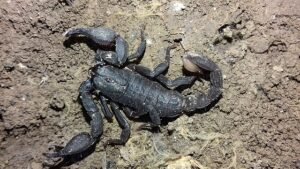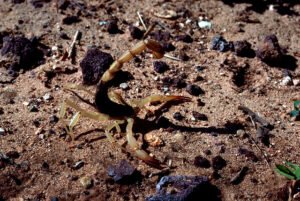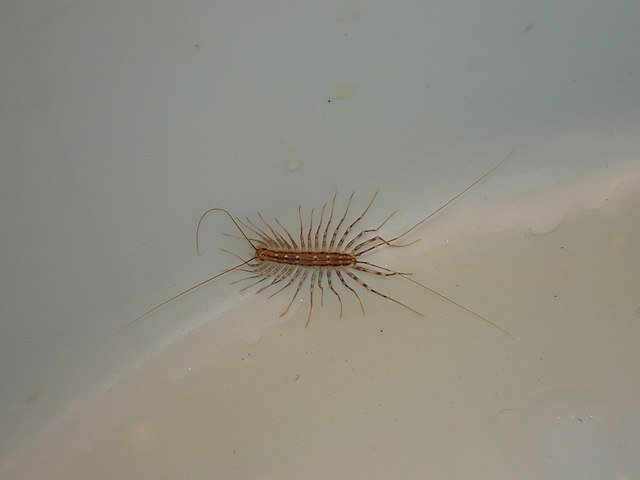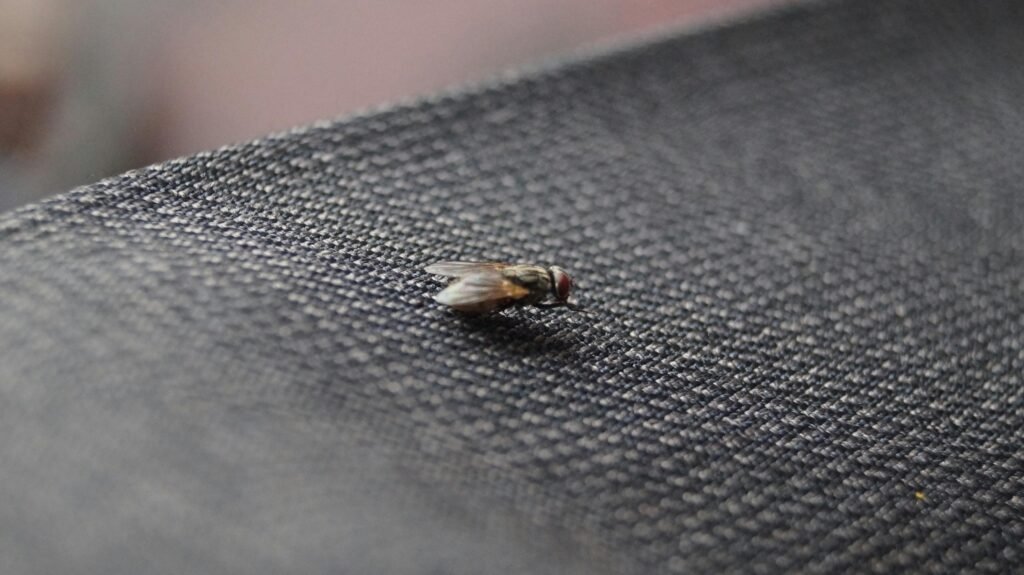Scorpions (Scorpiones): Identification, Risks & Control
 The Scorpions (Scorpiones) is one of the oldest living arachnids on Earth, with fossils dating back more than 430 million years. Known for their intimidating pincers and venomous stingers, scorpions are both feared and respected across cultures.
The Scorpions (Scorpiones) is one of the oldest living arachnids on Earth, with fossils dating back more than 430 million years. Known for their intimidating pincers and venomous stingers, scorpions are both feared and respected across cultures.
Unlike insects such as Cockroaches or Carpet Beetles, which are commonly associated with stored products or sanitation issues, scorpions are predators. They hunt live prey—typically small insects like Earwigs, Mosquitoes, Silverfish, and even other arachnids such as House Spiders or Wolf Spiders.
Although most scorpions are harmless to humans, a few species possess venom strong enough to cause serious medical issues. Understanding their biology, habitats, and control methods is essential for homeowners living in scorpion-prone regions.
Identification
Size: Range from 2 cm to over 20 cm, depending on species.
Color: Varies—yellow, brown, black, reddish-brown, or patterned.
Body: Divided into cephalothorax (head), mesosoma (abdomen), and metasoma (tail).
Pincers (pedipalps): Used to grasp prey.
Tail (metasoma): Ends with a venomous stinger.
Glow effect: Under ultraviolet light, scorpions fluoresce a blue-green color, a feature often used in field detection.Quick Distinction
Scorpions (Scorpiones): Arachnids with pincers and stingers.
Spiders (e.g., Parasteatoda tepidariorum): Arachnids with fangs and silk glands.
Insects (e.g., Cockroaches, Mosquitoes): Six-legged, with antennae and wings (in many species).
Biology and Lifecycle
Reproduction: Fertilization is internal but occurs externally—males deposit a spermatophore, which females pick up.
Gestation: Scorpions give birth to live young (viviparous), unlike most arachnids.
Brood size: Can range from a handful to over 100 offspring.
Parental care: Spiderlings climb onto the mother’s back until their first molt, relying on her protection.
Lifespan: 3–8 years in the wild; some species may live longer in captivity.
Feeding: Ambush predators that use pincers to capture prey and inject venom to subdue it.
Ecology and Distribution
 Global presence: Found on every continent except Antarctica.
Global presence: Found on every continent except Antarctica.Habitats: Deserts, savannas, tropical forests, grasslands, caves, and even urban areas.
Common regions: Southwestern USA, Mexico, Central and South America, Africa, the Middle East, Asia, and southern Europe.
Nocturnal hunters: Hide during the day under rocks, logs, or debris, and emerge at night to hunt insects like Mosquitoes, Earwigs, and Cockroaches.
Role in ecosystems: Natural pest controllers that regulate populations of small insects and arachnids.
Risks and Misconceptions
Venom: All scorpions have venom, but only about 25 species pose medical threats to humans.
Bites vs. Stings: Scorpions don’t bite—they sting.
Symptoms: Most stings cause localized pain, swelling, and redness; medically significant species can cause neurological or systemic symptoms.
Myths:
Myth: All scorpions are deadly. Reality: The vast majority are not dangerous.
Myth: Scorpions chase humans. Reality: They avoid people and sting only defensively.
Signs of Infestation
Sightings of scorpions inside basements, bathrooms, or garages.
Shed exoskeletons in hidden corners.
Presence of prey insects like Cockroaches, Silverfish, or Mosquitoes, which attract scorpions.
Scorpions found in shoes, bedding, or storage areas, especially in desert or tropical climates.
Household Control
Exclusion: Seal cracks, crevices, and gaps around doors and windows.
Sanitation: Reduce clutter indoors and outdoors—woodpiles, stones, and debris create harborage sites.
Moisture management: Fix leaks and control humidity. Scorpions are often drawn to damp environments.
Lighting: Reduce outdoor lighting to lower insect prey around the home.
Physical removal: Scorpions can be caught with tongs and relocated.
Natural deterrents: Sticky traps can help detect and capture individuals indoors.
Professional and Long-Term Control
Integrated Pest Management (IPM): Reducing prey insects like Cockroaches and Earwigs indirectly limits scorpion numbers.
Pesticide applications: Residual insecticides may be applied to baseboards, crawl spaces, and perimeters in high-infestation areas.
Professional inspection: Experts can identify harborage areas and implement exclusion strategies.
Specialized treatments: In regions with dangerous species, professionals may use targeted insecticide barriers or habitat modification to reduce risks.
Final Thoughts
The Scorpion (Scorpiones) is one of the most iconic arachnids on Earth. With their ancient lineage, glowing exoskeletons under UV light, and distinctive pincers and stingers, they inspire both fear and fascination.
For homeowners, the truth is simpler than the myths: most scorpions are not deadly. They are opportunistic hunters of insects such as Cockroaches, Earwigs, Mosquitoes, and Silverfish, and their presence often indicates an abundance of prey insects nearby.
The best approach to control is prevention and exclusion—sealing cracks, reducing clutter, and eliminating moisture. In areas with medically significant species, professional pest management may be necessary. For the majority of households, however, scorpions are more of a nuisance than a life-threatening danger.
Ultimately, scorpions serve an important ecological role as natural pest managers. While they may not be welcome guests indoors, their presence outdoors is part of a functioning ecosystem.
FAQs About Scorpions
Q: Are scorpions deadly to humans?
A: Out of over 2,500 known species, only about 25 are dangerous to humans. Most scorpion stings cause pain but are not life-threatening.
Q: Do scorpions glow under UV light?
A: Yes. Scorpions fluoresce a blue-green color under ultraviolet light due to compounds in their exoskeleton.
Q: Can scorpions infest homes?
A: Scorpions do not infest homes like Cockroaches or Carpet Beetles. They may wander indoors in search of prey or shelter but don’t establish large colonies inside.
Q: How do scorpions get inside houses?
A: Through cracks, gaps under doors, vents, and poorly sealed windows. They follow insect prey into homes.
Q: What should I do if I find a scorpion indoors?
A: Remove it carefully with long tools (never hands) or call a pest professional in high-risk regions. Long-term prevention involves exclusion and reducing prey insects.
Disclaimer
This article is for informational purposes only. Pest control laws and approved chemicals vary by country. For best results and legal safety, we strongly recommend contacting a licensed pest control professional in your local area. Always make sure that the pest control technician is properly certified or licensed, depending on your country’s regulations. It’s important to confirm that they only use approved products and apply them exactly as instructed on the product label. In most places in Europe, UK, or USA, following label directions is not just best practice—it’s the law.
Author
Nasos Iliopoulos
MSc Agronomist & Certified Pest Control Expert
Scientific Director, Advance Services (Athens, Greece)
Licensed Pest Control Business – Ministry of Rural Development & Food (GR)

 Global presence: Found on every continent except Antarctica.
Global presence: Found on every continent except Antarctica.
